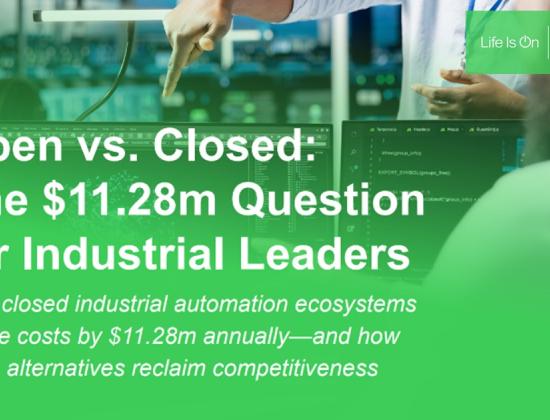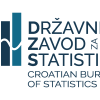Do you work to live? Or Do you live to work? How Leaders could involve their employees

In my September column I dive deeper into results of Gallup's new book: ‘Blind Spot: The Global Rise of Unhappiness and How Leaders Missed It’ by Jon Clifton and into the Gallup Global Emotions Report 2022 of September 15. The link to the report is: https://img.lalr.co/cms/2022/06/29185719/2022-Gallup-Global-Emotions-Report-2022_compressed.pdf. The link to an interactive world map where you can compare the scores per country is: https://news.gallup.com/interactives/248240/global-emotions.aspx.
Most people, also leaders and politicians, ‘blame’ the Pandemic for the negative emotions, relations, unrest etc. that we see worldwide rising in countries, societies and in the workplaces. This blaming is wrong, not correct. I continue with one direct effect, the ‘Quite Quitting’ that causes large disruptions in companies and people’s lives and in all labor markets. Several explanations and potential solutions are given. I finish with some suggestions for improvement for Leaders, their behavior and their Organizational Culture.
The Global Rise of Unhappiness
The world broke a lot of records in 2021. Corporate profits, venture capital funding, CO2 emissions and the temperature of the oceans all reached record highs last year. But there is another record the world broke that hasn’t yet made headlines and that has to do with how everyone feels.
All leaders use indicators to measure progress.
For example, if you ask CEOs what indicators they follow most closely, they would probably say revenue growth or share price. With world leaders, it's harder to know. Would they say GDP? Unemployment? The poverty rate? None of them would say happiness.
Actually, none of them know just how much unhappiness there is in the world today.
And that is concerning because unhappiness is now at a record high.
According to Gallup, people feel more anger, sadness, pain, worry and stress than ever before as you can see in figure 1.
Figure 1: The Global Rise of Unhappiness since 2006.
You probably think: "I don't need data to know that. The pandemic made everyone miserable, why is this surprising?"
Well, COVID-19 was bad for everyone, but we cannot blame the rise of unhappiness on the pandemic alone. Global misery was rising well before the pandemic. In fact, unhappiness has been steadily climbing for a decade -- and its rise has been in the blind spot of almost every world leader.
Experts know how to count almost everything: CO2 emissions, the size of urban slum populations, the contribution tourism makes to every country's economy, and even the number of trees in the Sahara desert. But while experts seem to count almost everything, they don't systematically measure how people feel.
Unhappiness has been rising worldwide for a decade, but almost every world leader missed it. Why?
Because they were focused on measures like GDP and unemployment, and not paying attention to how people were feeling.
Dear 7.7 Billion World Citizens, How Are Your Lives Going?
In 2006 Gallup began conducting global research on ‘subjective wellbeing’, which is used interchangeably with "happiness." The goal of the research was to definitively report -- by country -- how people's lives were going from their perspective. Was the world getting more stressed? Were people more hopeful? Were they getting angrier? Thousands of interviewers sat with people in their homes or called them and asked them about their lives. This work now represents more than 98% of the world's population and includes over 5 million interviews.
It is remarkable how open people are about sharing their sadness, their pain or their anger.
But it's also concerning that so many more people are sharing these negative emotions with us.
But why? Why are so many more people feeling this way? The answer has to do with an inequality the world is not familiar with. Leaders understand income inequality -- the growing divide between the financial haves and have-nots. What they are not familiar with is the growing divide between the haves and have-nots of a great life. This is called wellbeing inequality.
At the beginning of every wellbeing survey, Gallup asks people to tell them how good of a life they have. Here is the question verbatim:
Please imagine a ladder with steps numbered from zero at the bottom to 10 at the top. The top of the ladder represents the best possible life for you and the bottom of the ladder represents the worst possible life for you. On which step of the ladder would you say you personally feel you stand at this time?
When they first asked the world this question in 2006, 3.4% of people told Gallup their lives were a 10 -- the best possible life. And only 1.6% said their lives were a zero -- the worst possible life.
After 15 years of tracking, those numbers have shifted significantly.
The number of people living their best lives has more than doubled (to 7.4%), while the number of people living their worst lives has more than quadrupled (to 7.6%).
But it gets worse.
If you isolate the 20% of people globally who rate their lives the best and compare them with the 20% of people who rate their lives the worst, you find just how unequal the world is becoming in terms of wellbeing and happiness. In 2006, the 20% of the world who rated their lives the best had an average life rating of 8.3.
The 20% who rated their lives the worst had an average life rating of 2.5.
Now look at 2021: the 20% who rated their lives the best had an average life rating of 8.9, and the 20% who rated their lives the worst had an average life rating of 1.2.
The gap in those life ratings is now 7.7 points, the highest in the history of Gallup's tracking. The top 20% of the world could hardly be doing better, the bottom 20% could hardly be doing worse, as shown in Figure 2.
Figure 2: Global ‘Wellbeing Inequality’ between the top en bottom 20%.
You might think that income inequality explains wellbeing inequality and, therefore, rising unhappiness.
That is certainly part of it. But a great life is more than just money.
After studying the 20% of people who report having a great life, Gallup finds they have five things in common:
-they are fulfilled by their work
-they have little financial stress,
-they live in great communities,
-they have good physical health, and
-they have loved ones they can turn to for help.
The 20% of people who rate their lives the worst have very little of any of those things.
They don't have a quality job, their income is not enough to get by, they live in broken communities, they are hungry or malnourished, and they don't have anyone in their life they can count on for help.
And the 20% who rate their lives this low are getting sadder, more stressed and angrier than ever before. This total of 2 billion people live on insufficient incomes and another 2 billion are so unhappy with where they live, they wouldn’t recommend it to anyone they know.
The point of Gallup's new book, Blind Spot, is to show where the world is suffering and where it can improve. We cannot make the world better if we do not know how it is doing. The book outlines the indicators that leaders can watch so that they are never surprised again by rising stress, sadness or anger.
Positive Experience Index Drops
If people thought 2020 would go down in history as one of the worst years ever, the results from Gallup’s Positive Experience Index suggest they just needed to wait for 2021.
As it has every year for the past 16 years, Gallup in 2021 asked adults around the world if they had five positive experiences on the day before the survey. Last year, roughly seven in 10 people worldwide said they felt well‑rested (69%), experienced a lot of enjoyment (70%), or smiled or laughed a lot (72%).
Nearly nine in 10 felt treated with respect (86%). People were far less likely, as they are typically to say they learned or did something interesting the day before the interview; in 2021, half of the world (50%) experienced this.
As people worldwide lived on a steady diet of uncertainty in the second year of the pandemic, with more people dying from the coronavirus in 2021 than the previous year despite the rollout of vaccines, people felt less well‑rested and fewer derived enjoyment from the previous day.
The percentage who said they felt well‑rested dropped three percentage points and the percentage who experienced a lot of enjoyment dropped two. However, the picture wasn’t entirely bleak.
People were starting to smile and laugh again, the percentage who laughed or smiled a lot increased two points, and the percentage who learned something interesting ticked up one point.
Gallup compiles the “yes” responses from these five questions into a Positive Experience Index score for each country and area. With sizable declines on two items, the global index score in 2021 is 69 and dropped for the first time after several years of stability as shown in Figure 3.
Figure 3: Global Positive Experience Index.
Index scores worldwide ranged from a high of 85 in Panama to a low of 32 in Afghanistan, which is the lowest score that Gallup has measured for any country since the index’s inception.
According to the United Nations Food and Agriculture Organization, the decline in world hunger over the past few decades is over. In 2014, 22% of people globally were moderately or extremely food insecure; now, that figure is 30%.
The world is also struggling from a silent pandemic-loneliness. 330 million adults go at least two weeks without talking to a single friend or family member. And just because some people have friends, it doesn’t mean they have good friends. One‑fifth of all adults do not have a single person they can count on for help.
Global misery is also increasing because of an everyday aspect of life: WORK.
Many believe that a good, solid paycheck satisfies your work needs when in fact people who are miserable at work are statistically more likely to experience negative emotions than someone who has no work at all.
Hardened souls may not care about unhappy people, but they should.
A world filled with negative emotions makes people behave differently. Our emotions influence our decisions, actions and even our cognition, sometimes for better, sometimes for worse.
When our bodies and minds are overwhelmed with the worst emotions, our chances of making regrettable decisions increase. And acting out on negative emotions spreads negative emotions faster than a virus, especially when amplified over social media.
‘Quiet quitting’, why doing the bare minimum at work has gone global
In a recent article in The Guardian James Tapper concluded that ‘’the meaninglessness of modern work, and the pandemic, has led many people to question their approach to their jobs.’’
Rather than working late on a Friday evening, organizing the annual team-building trip, or volunteering to supervise the boss’s teenager on work experience, the quiet quitters are avoiding the above and beyond, the hustle culture mentality, or what psychologists call “occupational citizenship behaviors”.
Instead, they are doing just enough in the office to keep up, then leaving work on time and relax at home. And then posting about it on social media. Maria Kordowicz, an associate professor in organizational behavior at the University of Nottingham and director of its center for interprofessional education and learning, said the rise in quiet quitting is linked to a noticeable fall in job satisfaction.
Gallup’s global workplace report for 2022 showed that only 9% of workers in the UK were engaged or enthusiastic about their work, ranking 33rd out of 38 European countries. The National Health Service (NHS) staff survey, conducted in the autumn of 2021, showed that morale had fallen from 6.1 out of 10 to 5.8, and staff engagement had dropped from 7.0 to 6.8.
Kordowicz added: “The search for meaning has become far more apparent. There was a sense of our own mortality during the pandemic, something quite existential around people thinking ‘What should work mean for me? How can I do a role that’s more aligned to my values?’
“I think this has a link to the elements of ‘quiet quitting’ that are perhaps more negative: mentally checking out from a job, being exhausted from the volume of work and lack of work-life balance that hit many of us during the pandemic. “II think that can lead to less satisfaction at work, lack of enthusiasm, less engagement.
Some have reached their ambition and realized that it wasn’t what they were looking for.
Amie Jones began her career in marketing and became head of communications at a not-for-profit in 2017. “It was my dream job,” she said. “It sounds strange saying that now. But I wanted that position, the status, the salary. I was up for giving it a real go.” She continued to take phone calls at weekends, on holiday, at 10.30pm at night, turning up early and leaving late to keep up with colleagues.
“It was all driven by me,” she said, until her best friend from university told her she was dropping to three days a week. “It’s terrible, but I was a bit judged about it,” Jones said. “We were meant to be climbing the corporate ladder together. But she said ‘My busyness doesn’t equal my worth.’ And it blew my mind.” Within 18 months, Jones had quit to start her Kind Kids Book Club business.
“If you’re committed to your career and feel an emotional bond with the organization or the career, then if an event happens that violates the psychological contract, the unwritten expectations, that abuses our sense of whether we can trust the organization,” said Dr Ashley Weinberg, an occupational psychologist at the University of Salford. Enlightened companies are designing jobs that give employees control, pride in their work and a fair wage, but those efforts are undermined by the cost of living crisis, and workers end up feeling shortchanged. “People talk about money, and that’s important,” Weinberg said, “but beyond that, they want to be respected for what they do and valued in some way.”
Quiet Quitting Is About Bad Bosses, Not Bad Employees.
In Harvard Business Review, Jack Zenger and Joseph Folkman wrote “Quiet quitting” is a new name for an old behavior. The authors, who have conducted 360-degree leadership assessments for decades, have regularly asked people to rate if their “work environment is a place where people want to go the extra mile.”
Every employee, every workday, makes a decision: Are they only willing to do the minimum work necessary to keep their job? Or are they willing to put more of their energy and effort into their work?
In the last few weeks, many of those who choose the former have themselves identified as “quiet quitters.”
-They reject the idea that work should be a central focus of their life.
-They resist the expectation of giving their all or putting in extra hours.
-They say “no” to requests to go beyond what they think should be expected of a person in their position.
In reality, quiet quitting is a new name for an old behavior.
To better understand the current phenomenon of quiet quitting, we looked at our data to try to answer this question: What makes the difference for those who view work as a day prison and others who feel that it gives them meaning and purpose?
Our data indicates that quiet quitting is usually less about an employee’s willingness to work harder and more creatively, and more about a manager’s ability to build a relationship with their employees where they are not counting the minutes until quitting time.
What the Data Shows
We looked at data gathered since 2020 on 2,801 managers, who were rated by 13,048 direct reports. On average, each manager was rated by five direct reports, and we compared two data points:
-Employees’ ratings of their manager’s ability to “Balance getting results with a concern for others’ needs.”
-Employee’s ratings of the extent to which their “work environment is a place where people want to go the extra mile.”
The research term we give for those willing to give extra effort is “discretionary effort.” Its effect on organizations can be profound: If you have 10 direct reports and they each give 10% additional effort, the net results of that additional effort are increased productivity.
We found that the least effective managers have three to four times as many people who fall in the “quiet quitting” category compared to the most effective leaders. These managers had 14% of their direct reports quietly quitting, and only 20% were willing to give extra effort.
But those who were rated the highest at balancing results with relationships saw 62% of their direct reports willing to give extra effort, while only 3% were quietly quitting. See in Figure 4 the results.
Figure 4: Managers Impact on ‘Quite Quitting’’.
Many people, at some point in their career, have worked for a manager that moved them toward quiet quitting. This comes from feeling undervalued and unappreciated. It’s possible that the managers were biased, or they engaged in behavior that was inappropriate. Employees’ lack of motivation was a reaction to the actions of the manager.
Most mid-career employees have also worked for a leader for whom they had a strong desire to do everything possible to accomplish goals and objectives.
Occasionally working late or starting early was not resented because this manager inspired them.
What to Do If You Manage a “Quiet Quitter”
Suppose you have multiple employees who you believe to be quietly quitting. In that case, an excellent question to ask yourself is: Is this a problem with my direct reports, or is this a problem with me and my leadership abilities?
If you’re confident in your leadership abilities and only one of your direct reports is unmotivated, that may not be your fault. As the above chart shows, 3% or 4% of the best managers had direct reports who were quietly quitting. Either way, take a hard look at your approach toward getting results with your team members.
When asking your direct reports for increased productivity, do you go out of your way to make sure that team members feel valued? Open and honest dialogue with colleagues about the expectations each party has of the other goes a long way.
The most important factor is trust.
Analyzing data from more than 113,000 leaders to find the top behavior that helps effective leaders balance results with their concern for team members, the number one behavior that helped was trust.
When direct reports trusted their leader, they also assumed that the manager cared about them and was concerned about their wellbeing.
Our research has linked trust to three behaviors.
1.First, having positive relationships with all of your direct reports. This means you look forward to connecting and enjoy talking to them. Common interests bind you together, while differences are stimulating. Some team members make it easy to have a positive relationship.
Others are more challenging. This is often a result of differences (age, gender, ethnicity, or political orientation). Look for and discover common ground with these team members to build mutual trust.
2.The second element of trust is consistency. In addition to being totally honest, leaders need to deliver on what they promise. Most leaders believe they are more consistent than others perceive them.
3.The third element that builds trust is expertise. Do you know your job well? Are you out of date on any aspects of your work? Do others trust your opinions and your advice? Experts can bring clarity, a path forward, and clear insight to build trust.
The approach leaders took to drive for results from employees in the past is not the same approach we use today. We are building safer, more inclusive, and positive workplaces and we must continue to do better.
It’s easy to place the blame for quiet quitting on lazy or unmotivated workers, but instead, this research is telling us to look within and recognize that individuals want to give their energy, creativity, time, and enthusiasm to the organizations and leaders that deserve it because they are trusted.
Quiet Quitting - One Solution
Best-selling author Daniel Goleman argues that there’s one proven way to keep employees engaged in their jobs, and it’s not money.
Over the years, studies have shown that only about one-third of employees report being “highly engaged” at work. Even through the pandemic, this figure has stayed relatively stable.
Other statistics reveal similar shortcomings in the workplace: close to 70% of Americans feel that the bulk of their workday is taken up by monotonous tasks, jobs that may as well be automated. If such tasks were to be automated, employees believe their remaining jobs might take on significantly more meaning, giving them the bandwidth to engage in the strategic and creative work that ignites their passion and moves the business forward. These findings combined with rising burnout rates and reported declines in employee well-being, has prompted a new trend in the workforce: “quiet quitting.”
Quiet quitting runs parallel to The Great Resignation, another way employees are trying to communicate their deep dissatisfaction with the culture of work. Actual are a simple statement: “work is not your life” .
And while plenty of leaders might intellectually agree, the trend has sparked a good degree of anxiety and frustration. If you are a leader what’s more concerning: people leaving the workplace or employees keeping their jobs and slacking off? But quiet quitting isn’t really about avoiding work as much as it is about embracing a more meaningful life outside of it.
In a variety of jobs, studies have found that a good work-life balance is one of the key components of mental health. Meanwhile, only few employees feel they have it.
According to one study, when it comes to choosing an organization to work for, millennials and members of Gen Z report that a good work-life balance is one of their top priorities. For those who cannot afford to pick up and leave their job, quiet quitting is a way to reclaim personal time. It’s also a cultural push against the “hustle culture” most boomer and Gen X executives have succumbed to in order to succeed.
Korn Ferry CEO Gary Burnison recently reached out to a few leaders of various organizations to get a pulse on quiet quitting, work-life balance, and more. “Their array of answers reflects the perfect storm that we’re in,” he writes. One leader told him: “Employees quit (quietly or loudly) for a reason, it’s up to leaders to create a sense of purpose.”
At the end of the day, we keep circling around the same equation: the more meaningful the work, the higher the engagement and the less likely employees are to leave their workplace. According to a recent Gallup poll, it takes more than a 20% pay raise to convince employees to leave a job where they feel engaged, and next to nothing to poach them if they aren’t.
Gergo Vari, CEO of job-searching platform Lensa, has been working hard to prevent quiet quitting amongst his 200-person staff. Aside from giving employees remote-work flexibility and on-site office perks, he has encouraged a sense of purpose by valuing employees’ opinions, requests, and pushback.
“Employers have to make an effort to enable people to have a say in their own future,” he recently told Time. “I want them to stick around, and I’ll stick out my neck to encourage them to do so.”
Vari calls this “loudly persisting,” creating a workplace which encourages employees to speak up on how the company can better serve their goals, including opportunities to connect to something more meaningful.
According to Vari, “When you loudly persist you have a sense of belonging and of having a stake in where the company is going.”
The Great Resignation’s Culture Conundrum
Leaders are learning that they need to offer more than just higher wages to keep their employees, says Korn Ferry CEO Gary Burnison.
Money can’t buy loyalty. It just rents it for a while. If employers believe that higher wages alone can stop the Great Resignation as people quit their jobs at the highest rates on record, they’re in for a disappointment.
As bosses look for answers, culture is at the forefront—and the stakes are higher these days for almost every company on the planet. We’ve witnessed seismic shifts across the workspace, the likes of which haven’t been seen since the Industrial Revolution.
We’ve gone from subways and freeways to home office bedrooms and kitchen table desks. Liberating, but also isolating.
Culture can be the missing link. Unfortunately, it can also be a bit of a conundrum.
Ask six people to define culture and you’ll probably get 12 different answers. However, culture really boils down to just one definition: It’s how things get done.
Culture will vary, company to company, industry to industry. It’s never one-size-fits-all.
Culture needs to be lived, breathed, and experienced every day. Companies have a culture issue, especially in times of disruptions and needs for reinvention.
Having the right culture, at the right time, and with the right people can elude many companies. Often, it’s more art than science. In a survey our firm conducted, nearly three-quarters of executives described culture as being extremely important to organizational performance. Yet, only a third said that their culture was fully aligned with their business strategy!
We need to ask ourselves: How do we continue to empower people? How do we interact with and help each other? What should collaboration look like? How will the best ideas emerge? Do we need to be in physical proximity so that the happenstance of meeting in the hallway or getting coffee can spark insightful conversations? Or can we replicate that in other ways?
Lead by example
The leader plays a disproportionately large role: Culture starts at the top, where it is created and shaped. Given all we’ve been through over the past few years, leading is all about “grace”—that inner voice that constantly whispers: “It’s not about me, the leader.”
When leaders make others’ success their priority, they help define and differentiate the culture. That’s why Korn Ferry describes leaders as having two core roles today:
1.First, they are the culture champions: the role models who embody the mindset, beliefs, and desired behaviors.
2.Second, they are the culture architects who make sure that the right structures are in place to support those desired behaviors. Leading by word and by example can ensure that a healthy, inclusive culture takes root and grows.
The culture fit factor
We all know the questions people ask as they weigh whether to stay in their current jobs or pursue new opportunities: “What is it like to work there? What’s the culture like? What are the people like?”
What they’re really asking (in many different ways) is simply: “How will I fit in?”
We’re all vulnerable, we all have insecurities. We want to be loved, to belong, and to be part of something bigger than ourselves. It’s culture that opens that door and reassures people: “You matter, you make a difference, you belong here, you are welcome here.”
Culture should be on the walls and in the halls and, most importantly, in the hearts and minds of every employee. Elusive to define, powerful when deeply felt, it is best experienced together. Indeed, it may be the difference between people staying or going.
What is Your Workstyle?
This is a question we’ve been asking since 2014. You may not have asked it yet, but in future we think it will be inevitable. We created ‘workstyle’ to give people a language to describe their choice of when and where they work. Given that technology has liberated us from office routine, time and place, we felt it was missing from our vocabulary.
For a long time there was little freedom when it came to work. It was office-based, Monday to Friday and from 9 to 5. Any choices we made would need to fit with that idea of what ‘work’ meant.
If people were unable to work on these terms, options were limited. Think of older workers, parents, the neurodiversity, those with chronic illness, physical disability or mental health issues.
They struggled to fit this rigid mold.
The good news? The times are changing for how we can earn a living. Jobs for life are rarer and the corporate ladder is less linear.
A nice example is ASML, the Dutch global market leader in designing and manufacturing Lithography machines for producing microchips. ASML was founded in 1984. The company today has 32,000 FTE’s from 122 different countries in 60 locations. Reinvention and innovation is a continuous process. The company was chosen as the best employer of 2022, mainly because of their inspiring company culture. The need for constant reinvention, creativity and innovation is partly solved by neuro-divergent people. These are people who are highly talented and/or having e.g. autism, dyslexia, ADHD. 10-20% of the world population is neuro-divergent, ca. 20% of ASML employees are neuro-divergent, incl. the CTO. In ASML they form the internal and successful ‘A-typical network’.
Once, neuro-divergent people were looked at as being different, even crazy, today most companies still reject them for a job. ASML cannot stay on top without them.
Attitudes to work are changing
Many people now change traditional employment (which doesn’t feel as secure as it once did) for a freelance life (which doesn’t seem as daunting as it once was). They are changing conformity for autonomy. And they are pioneers of a shift in behaviors. They are early adopters of what we call ‘workstyle’.
During 4 years Hoxby researched the impact of autonomy on performance. The conclusion is clear.
When people can decide how, when and where they work (workstyle!) they are more productive, and enjoy an increased sense of well-being.
In short, research confirms the link between autonomy and productivity we have seen firsthand.
But data isn’t enough to change behavior. We have seen seismic human behavior change simply via the introduction of new words. Recall the post-pandemic understanding of what it means to be part of a bubble, or on Zoom, as examples of influential language. Workstyle can be a word we all use to bring about the inevitable: an autonomous future of work that offers better wellbeing and productivity.
Epilogue
Many disruptions at the same time, generations Z and millennials with different work-life demands, shortage of employees are causing a shake-up of leadership and organizational culture
Throughout this column you find some inspiration how to co-create a culture in which your people find themselves valued and appreciated.
A few suggestions to prevent losing good people, to attract new people and to co-create an appealing place to work in an inspiring culture. It is about communication, not top-down but on an equal level; the interested Leader ask questions and listens carefully to the answers, shows his respect and appreciation and by doing so he is building trust. In team meetings the Leader asks questions and let the people speak out freely, let them come with questions and suggestions, opinions.
In figure 5 you find several specific words from this column that are about change in Leadership, internal behavior and relations, organizing and in your Company Culture.
In your team meeting you can give this as a hand-out and ask for response, for ideas, for more related words as basis for an open dialogue with your team.
Figure 5: Hand-out with Individual and Cultural goals and values.
I like to thank Jon Clifton PhD, CEO of Gallup, James Tapper of the Guardian, Jack Zenger CEO and Joseph Folkman, President of Zenger/Folkman, Daniel Goleman, Gary Burnison, CEO of KornFerry and Alex Hirst for their inspiration.
John Lodder M.A., MSc.
(ps/sm)




























